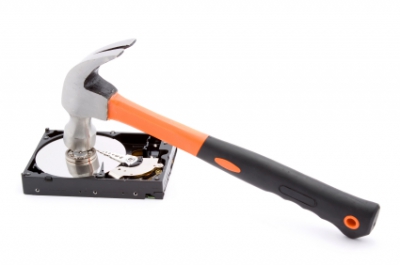Symptom 2. Hard disk’s capacity determined by data recovery program differs from real.
Compare hard disk’s capacity determined by data recovery program with its real capacity. If incorrect size of disk is read out by the program from system BIOS, it means that recovery may not be performed.
- Check whether reflected in BIOS parameters of geometric model of hard disk drive are correct. If not, correct them. By entering correct values let BIOS recognize hard disk automatically. Check in manufacturer’s documentation whether there is any other geometric model acceptable for this particular hard disk drive.
- If overlay software of hard disk drive is installed in the system (for example, Disk Manager, etc.), then BIOS may not find applicable parameters of geometric model of hard disk drive. You will have to boot the system from diskette which includes DDO start and only then proceed with data recovery.
- Make sure that logical block addressing is enabled in BIOS (LBA — Logical Block Addressing) — it is required for hard disk drives with capacity of over 312 Mb.
- Check drive’s parameters readable by BIOS from it. IN some cases (if drive has huge capacity) it is limited at the level of 16383x16x63 regardless of real capacity. Often it means that you need to update BIOS or install new controller that will be able to ensure normal work of the device.
Symptom 3. Data recovery program brings incorrect results because it cannot recognize hard disk drive’s structure correctly.
If a data recovery program automatically recognizes the structure of hard disk drive, this mode may be disabled and resume data recovery. In this case the program will ask you to confirm its interpretation of drive’s structure:size of C cluster (i.e. number of sectors in cluster), number of beginning Nb and end cluster Ne with data. Determined by the program size of logical volume (in kilobytes) can be calculated according to the following formula:
(Ne-Nb)*С/2
If the result matches the real size of volume that is subject to recovery, then you may try to recover. If the result is not satisfactory, you may want to try once again. If you cannot do it, make sure, just in case, if the used data recovery program is compatible with volume’s file system (for example, program designed for FAT32 will not correctly recognize the structure of a disk with FAT16).
Symptom 4. Data recovery program recovers not all files and directories.
It happens when too soft recognition criterion is set. Try to make it tougher. It will increase the time needed by program to accomplish the task but will allow recovering more files and directories.
Symptom 5. Hard disk drive makes noise while in operation.
All hard disk drives make little noise while in operation. When disk spin up you hear an increasing noise passing into even humming; when head is moving from one track to another you may hear clicking noise – these are completely normal things. However, if strong cracking or scratching noise is heard, it means that the drive is about to fail. In this case you need to immediately backup all data and replace the drive. If it has already failed, don’t try launching data recovery software. Purchase new drive and transfer to it last backup data and send the failed hard disk drive to a specialized repair company.

 When using any data recovery software you might face different problems. Here we are going to discuss possible complications and solutions.
When using any data recovery software you might face different problems. Here we are going to discuss possible complications and solutions.